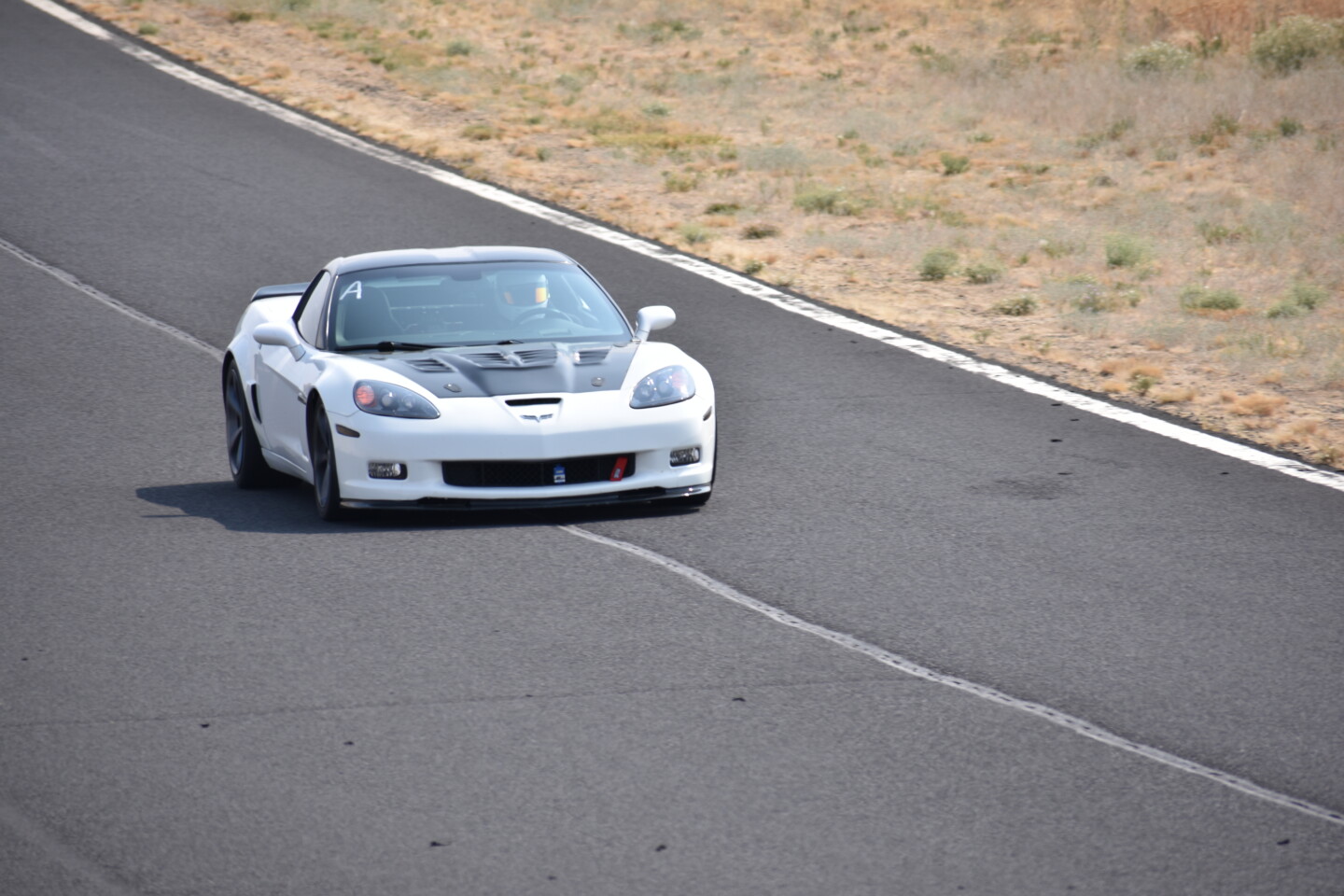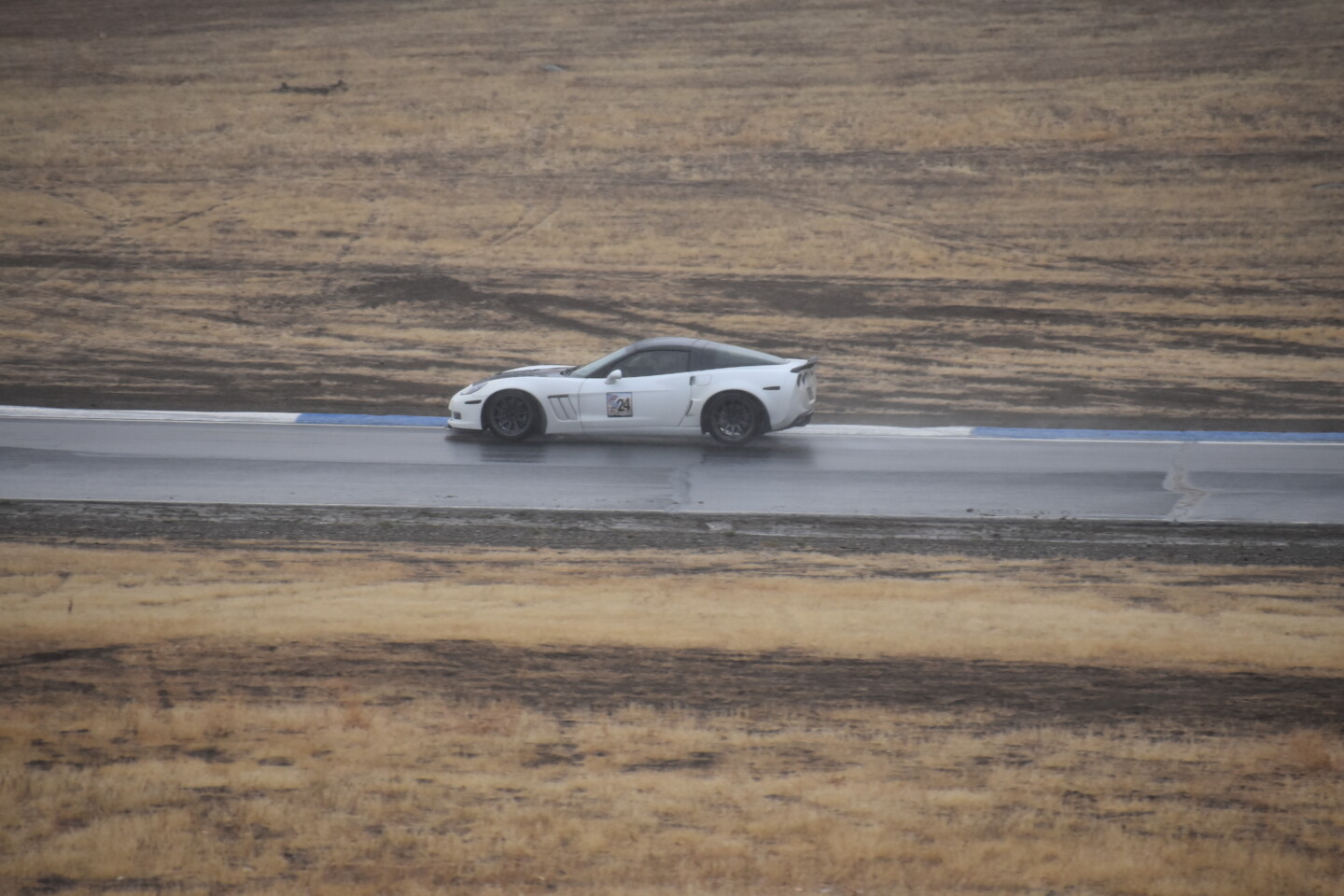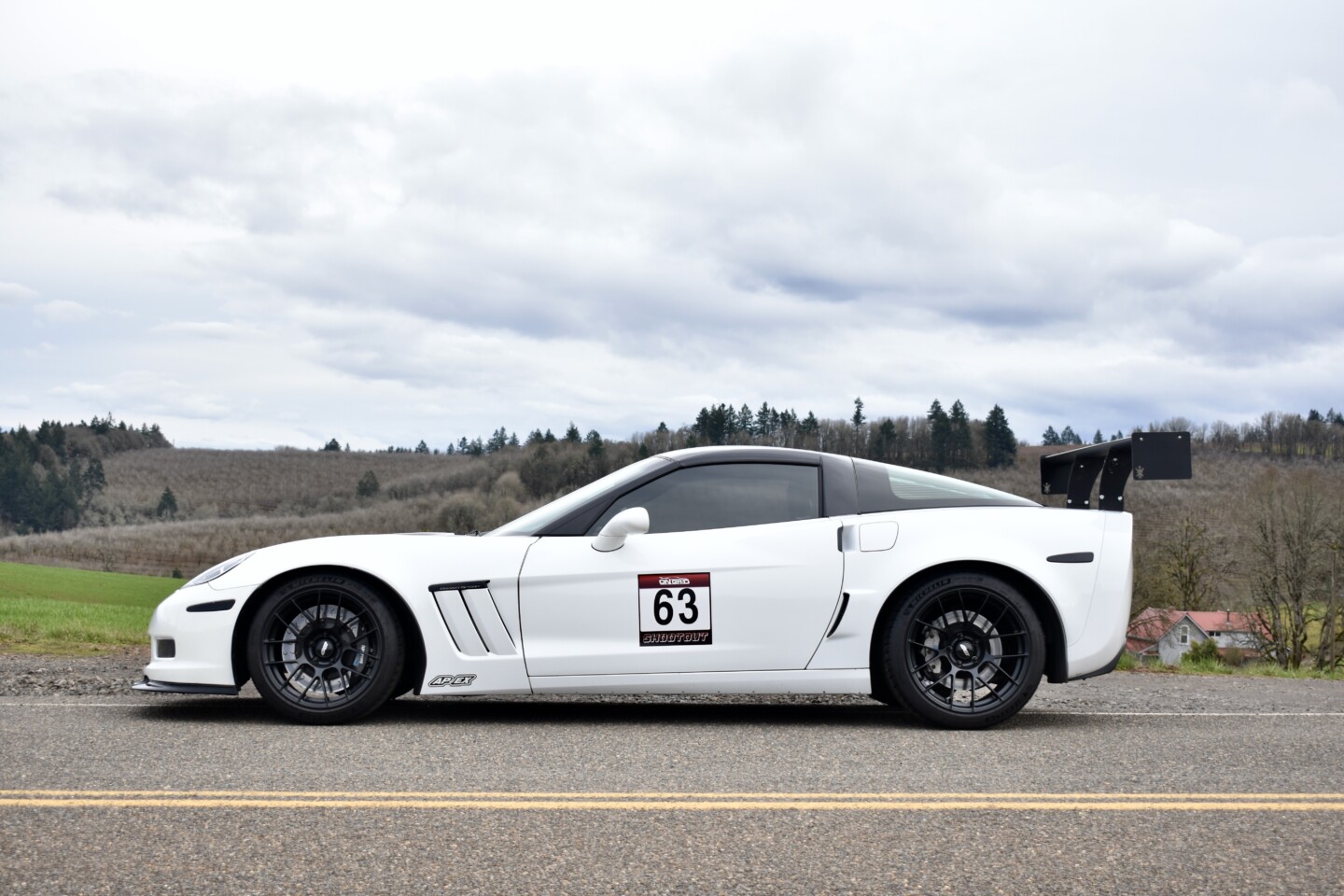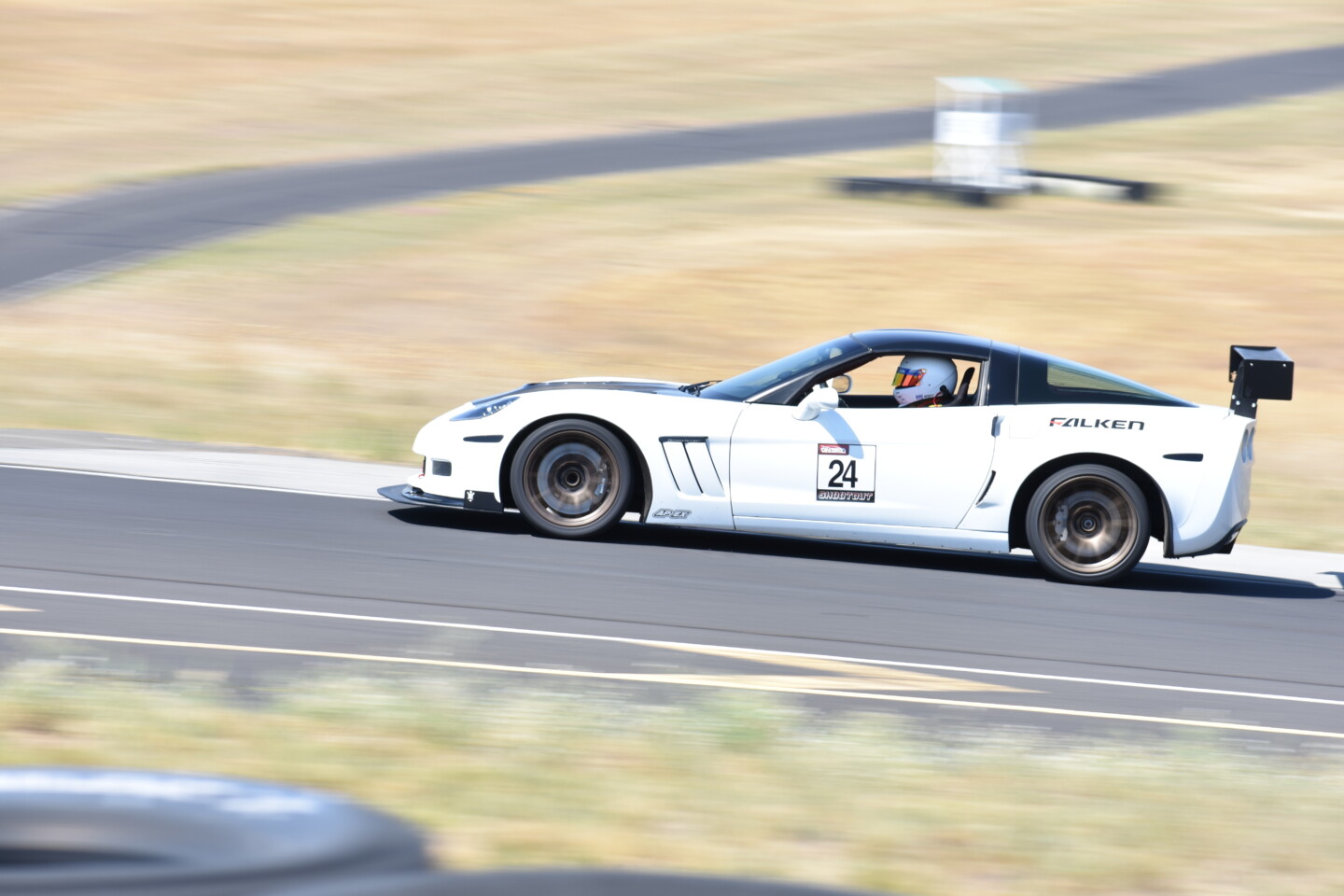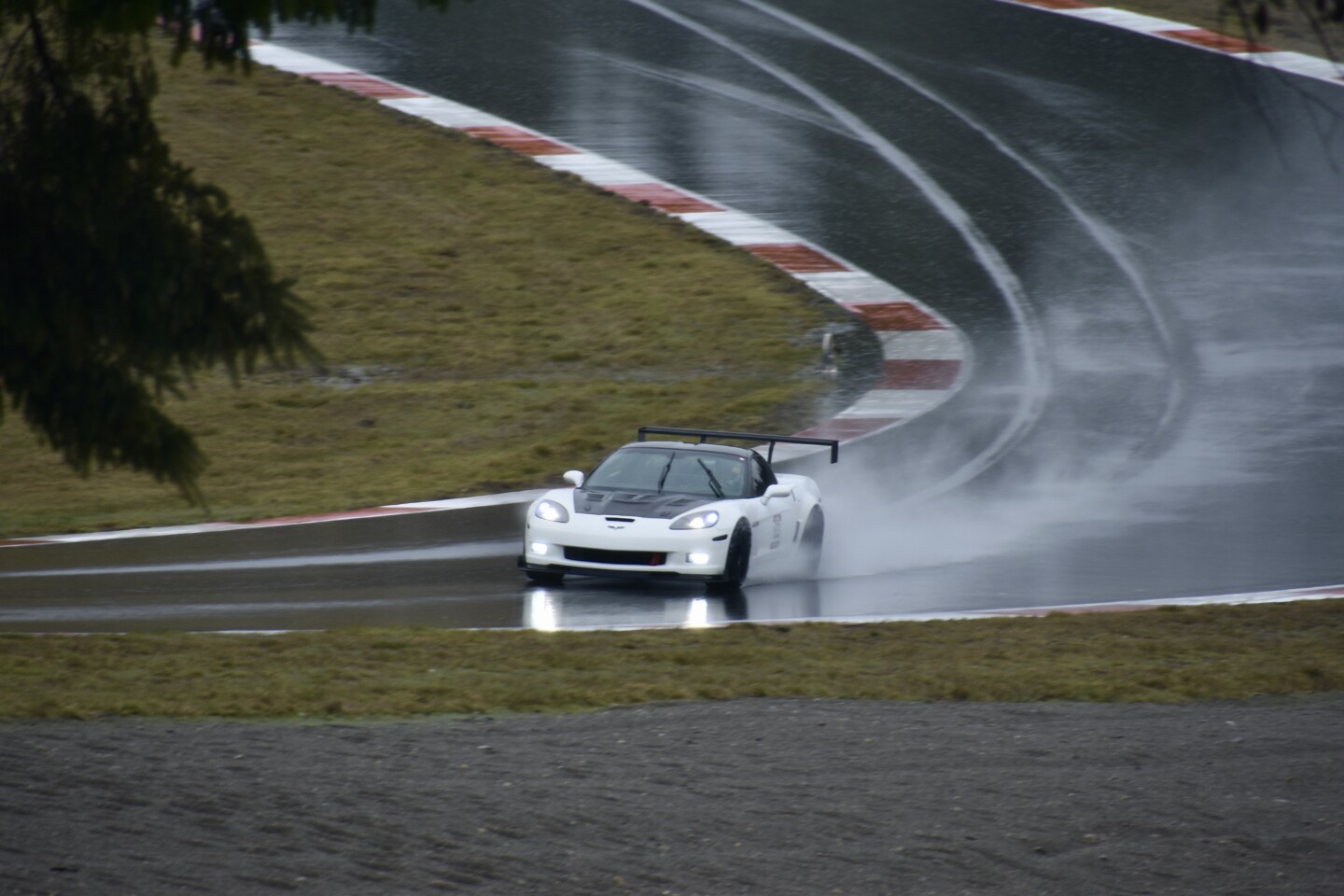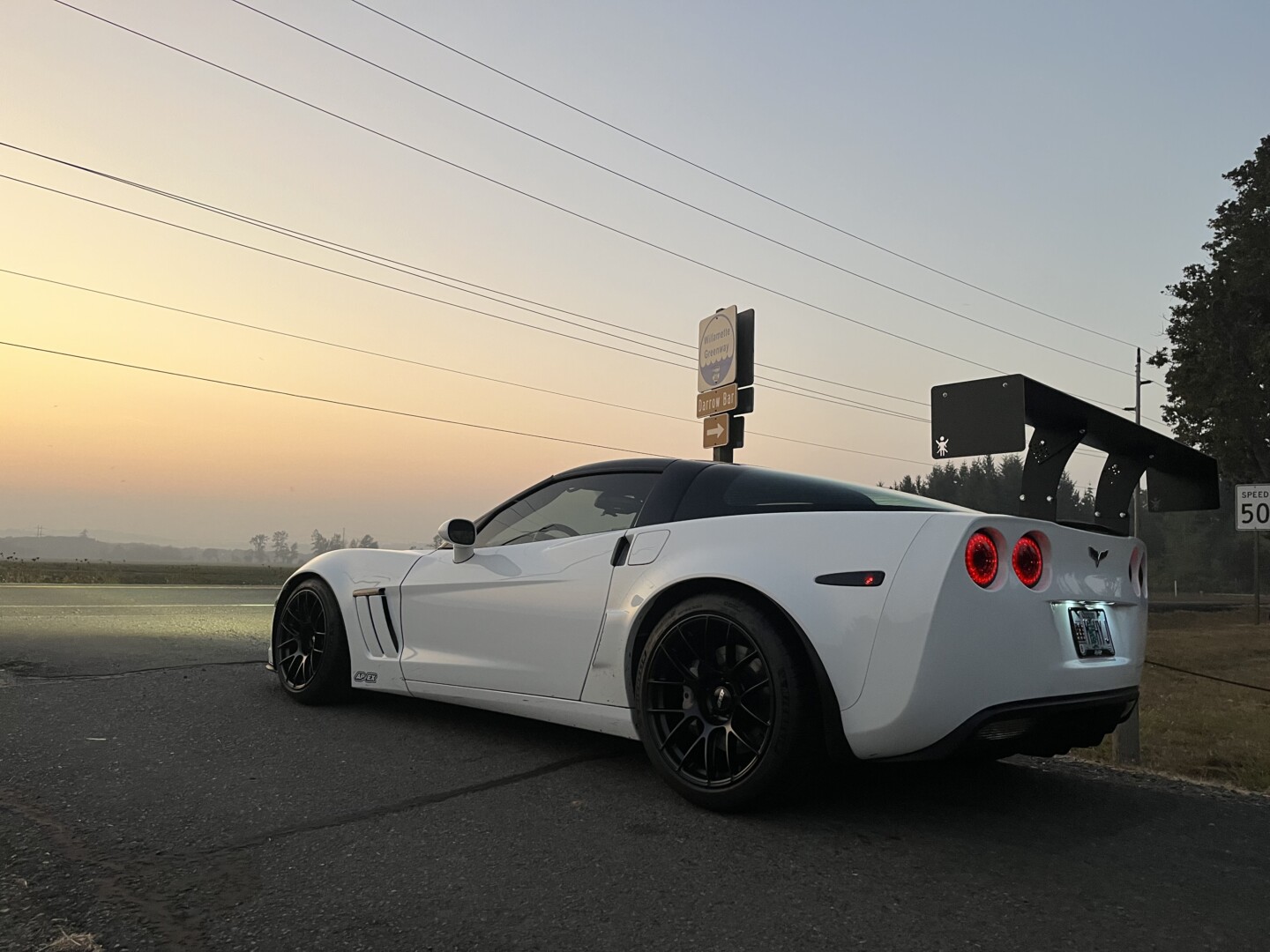It took him nearly a decade of tracking Mustangs before Cory Smetzler decided to ditch the pony car. He’d grown tired of the Mustang’s shortcomings, and being a man who spends his days sizing aftermarket wheels for popular performance models, he’d already gotten an idea of a suitable replacement. His pragmatism steered him in the direction of the Corvette Grand Sport.
Smetzler had his “road to Damascus” moment courtesy of a close friend with a mildly modified C5 Z06. True, the Penske shocks were top-shelf, but they were the only primo modification it had received. In fact, the only other performance improvement over stock was a set of Nitto NT01 tires, and the combination was staggering. “With only those modifications, it was already much better than my Mustang race car,” Smetzler said.
A lower center of gravity, a little more weight over the driven wheels, and the ability to mount massive tires and wheels without additional bodywork were a large part of the Corvette’s general appeal. But, even Smetzler, as functionally-minded as he is, couldn’t deny that he was drawn by the shape of the car — particularly the long, slinky lines of the sixth-gen.
I’d been eyeing ‘em for a while. I love the C6, particularly the widebody versions. After my friend’s dad let me test his C6 Z06 on the street, I knew I had to have one. – Cory Smetzler
Smetzler is a sensible guy, and the rebuild costs of an imperfect LS7 could not be ignored. While the LS7’s sensational top end isn’t something that is easily forgotten, he preferred something more dependable. If he could depend on his imagined track car, he would have no difficulty racking up the hours behind the wheel. That would amount to much more joy than another thousand revs and a little more horsepower.
Taking the Middle Path
Inspired by Steven Kronemberger, Smetzler figured he’d temper his lust for the look of the C6 with a pragmatism that would keep his rear in the seat. In his eyes, the best compromise between style and dependability was the mid-tier Grand Sport variant of the C6. While the Grand Sport lacks the LS7 and aluminum frame, it comes with the Z06’s wide body and an LS3 that is no slouch.
Smetzler’s chosen C6 Corvette Grand Sport came from an owner who took excellent care of it. Additionally, the Corvette already had a few modifications comprised of quality components: a Dewitts radiator, an LG carbon hood, LG swaybars, a FAST 102 mm intake, a Nick Williams throttle body, Doug Rippie Motorsports differential and transmission coolers, and a Brey-Krause harness bar. The considerable cost involved, combined with the fact that it had been meticulously maintained by the previous owner, put Smetzler at ease.
The Grand Sport doesn’t have many weak links, although Smetzler found one that needed attention almost immediately. During one long day at Oregon Raceway Park, one of the bleeder screws on a front caliper came loose. Thankfully, the track is situated in the middle of a field, and so he careened off into the weeds, far from anything solid.
I wasn’t going to waste any more time or money short-cutting the braking problem, so I went out and bought a set of AP Racing Essex front brakes that night — the big ones with the 372 mm rotors and inch-thick Hawk pads. – Corey Smetzler
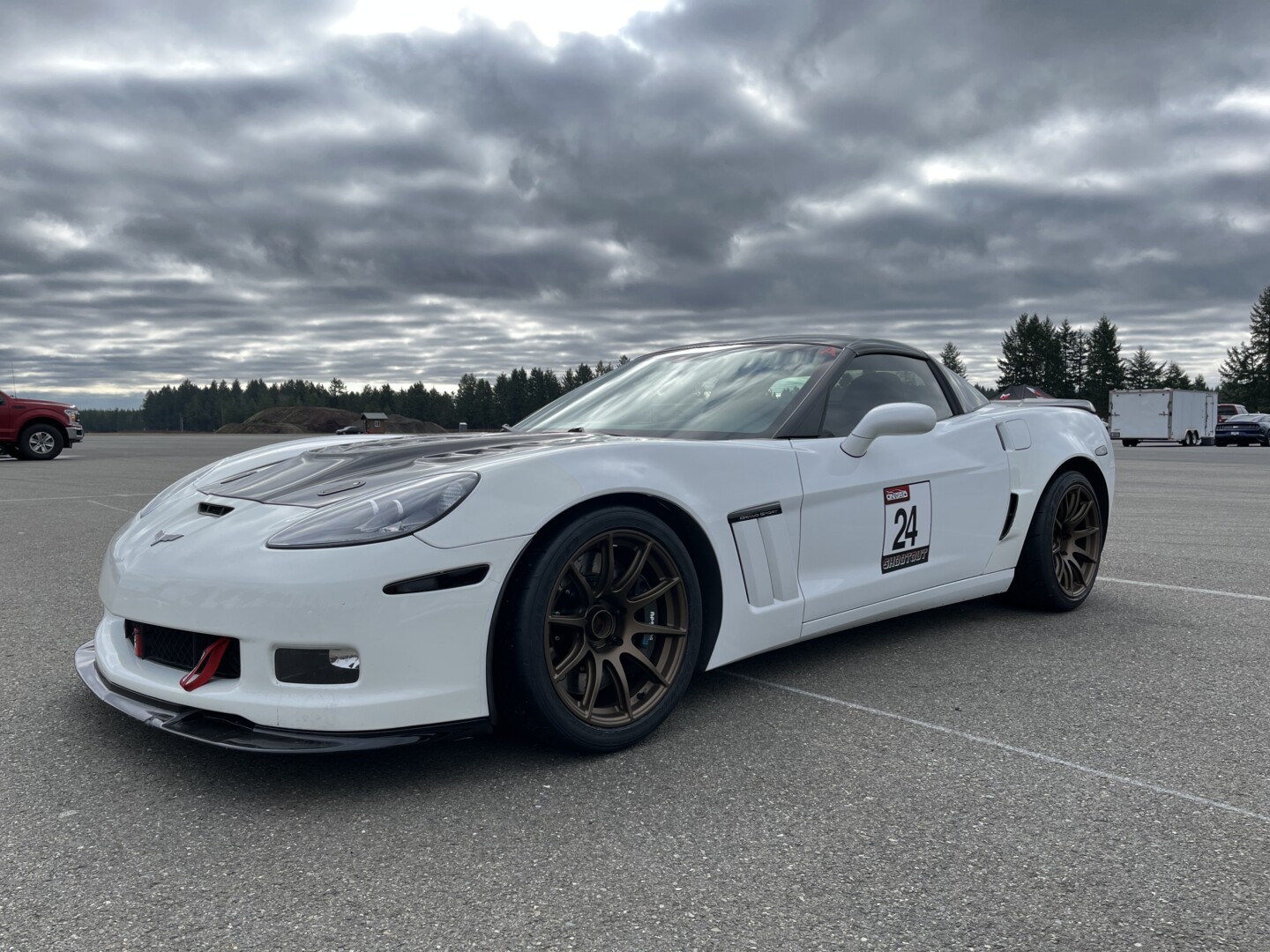
To accommodate bigger brakes, Smetzler had to find a new set of wheels for the Grand Sport. He walked back into the stockroom where he works and picked out a set of APEX SM10-RS wheels measuring 18×12 inches with 315-section Falken RT660 tires for the front and rear. Working in the industry has its perks.
Quick enough in near-stock form, Smetzler wisely focused on improving reliability, not additional speed. He installed a set of BTR dual valve springs, a C5R timing chain, a PowerBond Race Series damper, and Cadillac race lifters from the CTS-VR race car. To aid in valvetrain longevity, he installed a Katech Torquer camshaft that features a lobe profile with softer ramp rates, while still increasing lift.
Along with a set of thermo-coated American Racing headers and thinner head gaskets to bump the compression ratio, the new additions amounted to 470 horsepower and 470 lb-ft of torque at the wheels. While these numbers are somewhat shy of what a similarly modded LS7 might make, it has such a broad powerband that it reaches the end of Ridge Motorsports Park at a similar speed to a friend’s mildly tweaked ZL1 1LE.
The straight-line speed was satisfactory but the way it wallowed in the middle of the corners felt a little too familiar. “It would lose dynamic camber, it would chew up tires, and it took a long time to take a set. Basically, it was acting like a Mustang — exactly what I was trying to get away from,” Smetzler explained.
Proving the good bones of the car, not much was needed to whip the American icon into shape. A set of Viking coilovers and Borg Motorsports delrin control arm bushings made the handling more precise, quick to transfer weight, and much easier on tires. “I don’t think any other group of mods made as big a difference,” Smetzler said.
Because of the poor motion ratio of the rear leaf springs, he decided to double the rear spring rate. It helped the car break away in a more progressive fashion, and it made the car easy to drive with the rear constantly sliding. “I don’t think I ever drove a car as comfortably with this much slip angle before.” It takes a hairy chest and quick hands, but Cory’s learned how to cajole this big, pointy car into doing what he wants it to. With the right touch and some trust in the machinery, an intermediate driver will find this big, heavy C6 is more willing to rotate than some would imagine.
Second Stage
Aside from a few minor tweaks to improve the LS3’s cooling — hood vents and removal of the air conditioning condenser to improve airflow to the radiator — the powertrain has been basically bulletproof and problem-free. It wasn’t until he improved the car’s grip that an issue presented itself. Higher exit speeds put Smetzler in that awkward gray space between fourth and fifth gear at the end of certain straights. Rather than fiddle with the gearbox, he went for 19-inch rear wheels and tires with a taller sidewall to increase rollout and keep him off the rev limiter — and it helps him avoid needing to make an additional shift.
The wing came next. Smetzler demonstrated just how capable the car was when relying largely on mechanical grip, a big motor, and a slippery shape, but the rear stability wasn’t up to snuff, so he ordered half of the Nine Lives Racing catalog. A single-element rear wing, mounts, endplates, front tunnels, and a splitter template got the ball rolling. He used the template to cut a large piece of birch, which he then coated in bed liner.
Few cars costing similar coin are capable of lapping The Ridge Motorsports Park in 1:44, and that sort of time requires a combination of strong straight-line speed and cornering capabilities. Smetzler’s terminal speed along the front straight is 152 miles per hour —roughly as fast as a Porsche 991 GT3 RS — and the way he can adjust the car mid-corner with the throttle (0:30 in the video below) is a benefit.
Though the aero bits have bolstered Smetzler’s confidence, the rear remains a little livelier than he’d like — particularly in the high-speed sections. It’s still on its tippy-toes in high-commitment corners like Turn 9 (0:54 in the video below) where he would prefer a little more reassurance from the rear. Smetzler is considering installing larger endplates, trying several different gurney flaps, as well as the dual-element version of the rear wing. These three changes might promise twice the rear downforce, but there are possibly some cheaper ways to funnel airflow around the basic C6 shape without having to shell out any more money.
Last on the Short List
Surprisingly, he hasn’t made many safety improvements, but he’s not concerned. Due to its targa top design, the Grand Sport has strong halo support from the factory. A four-point harness bar features two downbars to help triangulate the forces, but the safety precautions aren’t what you would expect in a 500-horsepower, 3,300-pound car. “I have faith it will perform well if needed,” he insisted.
There’s one major objective left on the to-do list, and that’s implementing a diet. The 3,300-pound Grand Sport makes its mass felt in slower corners, though its torque helps compensate some. “If I could take another couple hundred pounds out of the car, I’d be happy — but I’m going to keep the interior,” Smetzler said, “I’ve learned from past projects that stripping every ounce at the cost of civility isn’t worth it.”
Clearly, Smetzler has been around the block and knows the mistakes many big-dreaming builders make. This build is shaped by years of ambition leading him down the wrong path and the succession of headaches stemming from picking the wrong platform. This C6 is simple, stout, and provides him with the right sort of repeatable experience needed to grow as a driver. “I wanted to get the modifications done quickly so I could focus on driving. I’d spent too much time with my Mustangs fussing over what little things I could improve,” Smetzler explained, “This time, I just wanted something fast and dependable. There was more to gain from seat time than from obsessing over tiny tweaks.”
Wisely, the money he didn’t waste on tinkering unnecessarily went into coaching. With Ken Hill helping him at Northwestern tracks and Joe McGuigan at the California ones, he’s put his philosophy to good use. Rather than rack his brain over minutiae, he racked up the track miles, saved himself from headaches, and earned a few trophies along the way.
While it’s true the cost of consumables is high, the C6 platform, if built properly, doesn’t have to be a money pit. “These cars get a bad rap, but they’re incredibly fun to drive, very easy to maintain, and extremely fast for the money. Maybe I’m a prematurely middle-aged guy, but then again, maybe they just work well,” Smetzler said.




